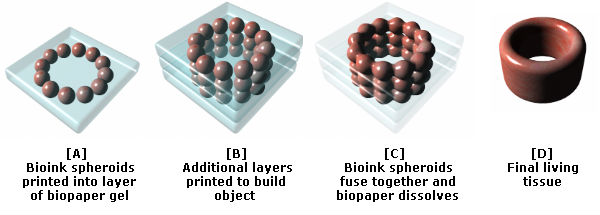There are two types of social problems that can be alleviated by bio-printing in what would be a paradigm smashing achievement. The first category is those that arise from the farming industrial complex. According to a 2011 paper from the Journal of Animal Science.
- Each year, nearly 300 million tons of meat is consumed worldwide. By 2050, this amount is expected to exceed 500 million tons (70% more).
- The average American alone eats over 270 pounds of meat per year (equivalent to more than 1000 burgers).
- Meat is one of the most environmentally taxing resources – animal farming takes up one third of all available (ice-free) land on the planet. It is the leading contributor to climate change via greenhouse gas emissions.
- Industrial farming has also concentrated livestock to such an extent that it has significant consequences for food security (i.e. preventing disease outbreaks), the environment and animal welfare.
- Creates 18% of all greenhouse emissions.
Source: J.L. Capper, Journal of Animal Science, December, 2011
Our current system is dirty, polluting, unsustainable, taxing on the environment, produces food low in nutrient density and high in toxins, cruel in its treatment of life forms capable of pain and fear, and above all, new. Our species gathered and hunted for 2 million years, following the migrations of large ruminants. Traditional farming has been around for whopping 10, 000 – 20, 0000 years. Processed, and industrial food? Less than 100 by all counts.

It is ironic that, although science is showing us the limitations of our current system of meat-production, that same evolutionary history also suggests that we humans fare better at higher rates of protein consumption, much to the disdain of the vegetarian movement.
Generally you have three opinions in regard to this topic.
1. The first is that, although imperfect, this system is the only way we’re gonna feed a growing populace. Though some may be well intentioned in asserting this, hunger is an economic/distribution problem not a lack of food problem. 3d Printed meat is much less expensive to produce.
2. Lets get our protein from beans. Thing is, human proteins bare more resemblance to bovine proteins than legume proteins and our evolutionary history conditioned us for beef consumption. For those who are vegetarian on an ethical basis, no organism would have to suffer if such a method were perfected.
3. The organic/non-GMO/Paleo/small-farming/localvore movements. A worthy step in the right direction, but it doesn’t elimnate the the issues, although it greatly reduces them. If commercial meat bio-printing can be done at all, it would by default be free of the toxins that plague our current model.
The second application is a lot more speculative and dependent on related emerging technologies like stem-cell tech, nano-tech surgery and delivery applications, and collagen scaffolding techniques.
The intent here is to make complex structures like functional muscles and organs for use by patients requiring them. I will detail my findings of this newborn industry, highlighting hallmarks and key players. Ultimately, I will also gain insight on how to position myself to break into it.

https://www.recordedfuture.com/3d-bioprinting/
J.L. Capper, Journal of Animal Science, December, 2011.
http://modernmeadow.com/
http://www.huffingtonpost.com/2012/08/16/peter-thiels-3d-meat_n_1789665.html